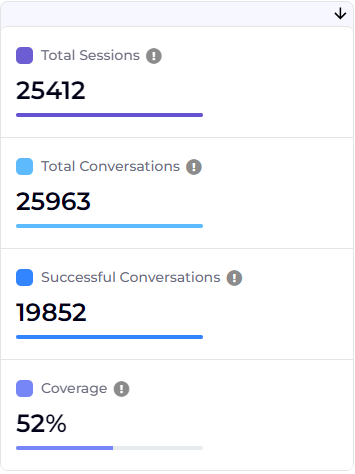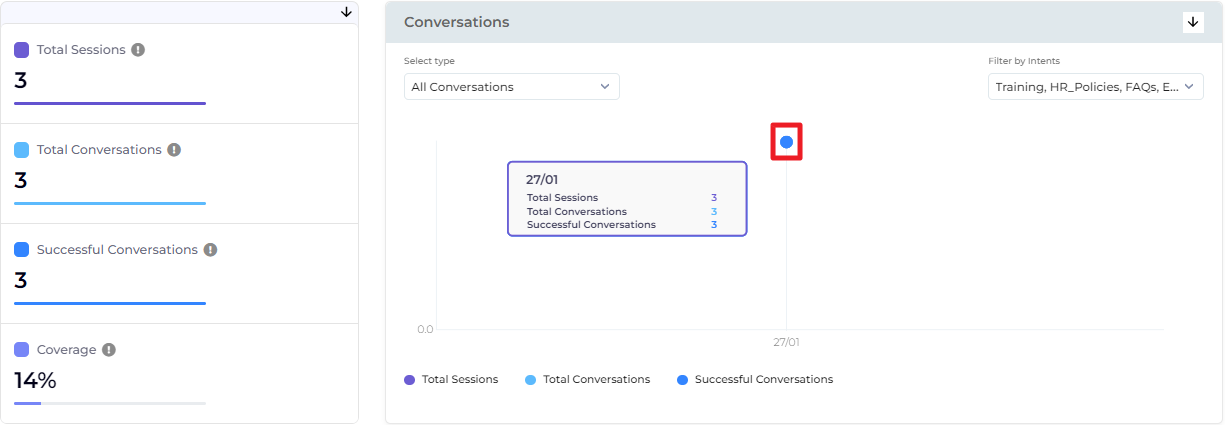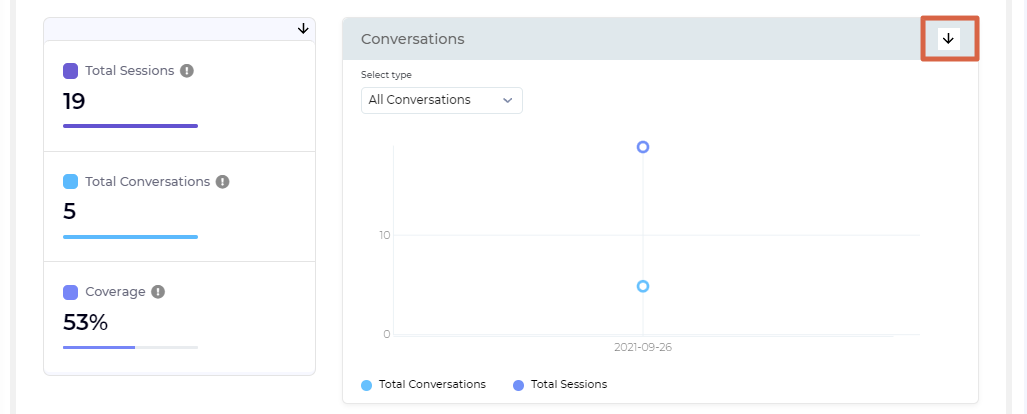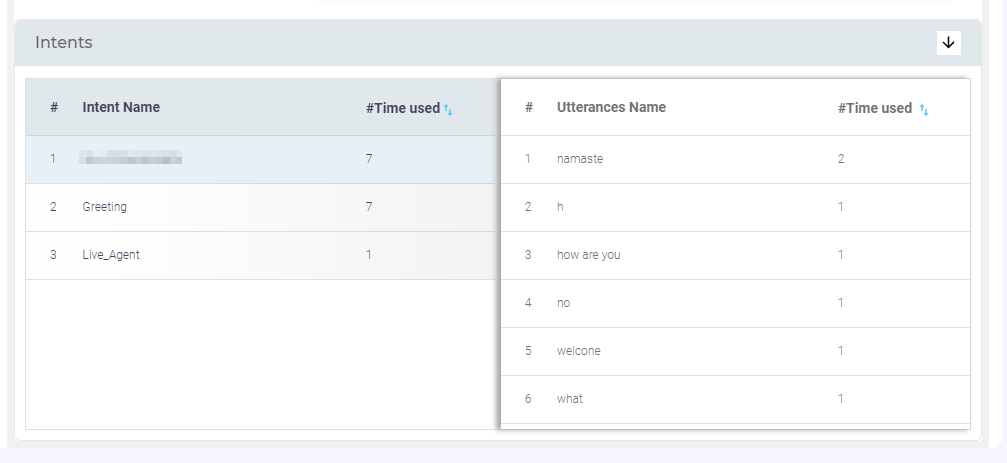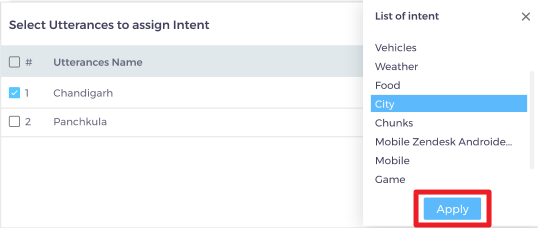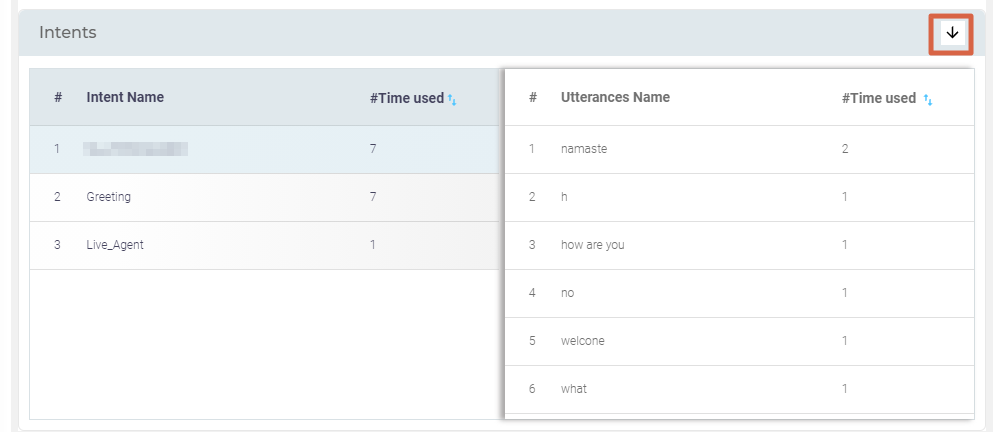Overview: Take a Deep-dive into the Conversations and Intents
The Overview report gives admins a look into the number of conversations for which the Chatbot was consulted, and the numbers each intent was was used. The report also involves four tiles; Total Sessions, Total Conversations, Successful Conversations, and Coverage.
Total Sessions
The number of search sessions in which SUVA is consulted at least once. A user can converse with SUVA multiple times in a session without increasing the Total Sessions count. Total Sessions increases only when user lands on a platform, where SearchUnify is installed and a user launches SUVA at least once before the search session expires.
Total Conversations
Each instance of launching SUVA is a conversation. A user can click the virtual agent icon to start a conversation and later close the chat window. Because a search session can host more than one conversations, total conversations can be more than total sessions.
Successful Conversations
The total number of conversations that meet the criteria for success as defined in Settings. For instance, you can define success as those conversations in which the end-user leaves a feedback. Or, you can define successful as those conversations in which the end-user doesn't create a case and doesn't ask to be connected to a live agent. All the criteria and their usage are mentioned in Settings: Measure the Success of a Virtual Agent (Chatbot).
Coverage
Coverage is the ratio of intents triggered to free utterances.
A free utterance is a text input. Clicking on a link, selecting an option, or responding to a bot are all utterances but not free utterances. Only those utterances are free utterances in which a user inputs text that starts a new conversation and the bot looks for matching intents.
To Download the tiles data, click  on the top right of the tiles section. The report is downloaded as a .csv file and is segmented into two columns.
on the top right of the tiles section. The report is downloaded as a .csv file and is segmented into two columns.
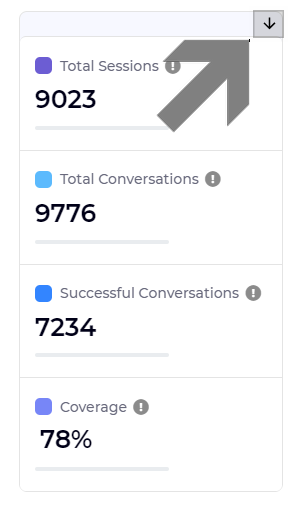 There are two sections in the report: 1. Conversations and 2. Intents.
There are two sections in the report: 1. Conversations and 2. Intents.
 Conversations
Conversations
Conversations section features two line-charts: All Conversations and Coverage. You can switch between the charts through the Select type dropdown.
All Conversations
The Conversations chart plots Total Sessions and Total Conversations against time. Along the x-axis is flexible time in hours (if Date Range is Today or Yesterday) or days (if Date Range is Last 7 Days, Last 30 Days, This Month, Last Month, or a Custom Range shorter than 3 months). Along the y-axis are Total Sessions and Total Conversations.
On hovering the cursor over a point, you can view the exact Total Sessions and Total Conversations, along with the time of their happening.
Filter by Intents filter lets you deselect/select the intents to see the conversations data for only selected intents. By default, all the intents are selected.
Coverage
The Coverage chart plots coverage against time. Coverage is the percentage of conversations for which both intents and stories/responses were found. If either one of these is not available, the conversation goes to a fallback response. The high coverage percentage is good news for admins. Along the x-axis is flexible time in hours (if Date Range is Today or Yesterday) or days (if Date Range is Last 7 Days, Last 30 Days, This Month, Last Month, or a Custom Range shorter than 3 months). Along the y-axis is Coverage and Total Conversations .
On hovering the cursor over a line, you can view the exact Coverage and Total Conversations, along with the time of their happening.
Filter by Intents filter lets you deselect/select the intents to see the conversations data for only selected intents. By default, all the intents are selected.
When the data is ample, a horizontal scroll can be used to view the entire chart. Conversely, when there is no data, which can happen when the virtual agent is new or the Date Range is extremely short, you get an error message (as shown in the below image).
Download or Share
To download the conversations data, click  on the top right of the tiles section. The report is downloaded as a Analytics_All_Conversations.csv.
on the top right of the tiles section. The report is downloaded as a Analytics_All_Conversations.csv.
 Intents
Intents
What do your users actually want? The fastest way to find an answer is to consult the Intents report. It lists the most frequently consulted intents in the left panel and the utterances that triggered them in the right panel. Each panel also showcases the number of times an intent or utterance has been used.
The left panel has two columns: Intent Name and #Time Used. The first column is a list of the intents sorted by popularity. The most used intent is at the top. The number of times an intent is used is in the column #Time Used. The column is sortable.
The right panel has two columns the first of which is Utterances. The first column is a list of utterances that triggered the highlighted intent in the left panel. By default, the top intent is highlighted. But you can click another intent in the left panel to view a different set of utterances. The next image shows the utterances based on the second intent.
The #Time Used column indicates how many times a particular utterance has been entered.
Move [Untrained_Data] Utterances to Intents
It has been explained in Add Intents and Utterances that all the utterances, for which no linked intents are found and for which Out_of_Scope hasn’t been configured, are gathered in Untrained_Data. Admins can view the utterances by selecting Untrained_Data in the Intent column. Also, they can move utterances from Untrained_Data to another intent.
-
Select utterance(s) from the list and click Move to intent.
-
Select the intent from the list of configured intents to which you want to move the utterance to, and click Apply.
You will see an 'Updated Successfully' message when the selected utterance(s) are moved to the selected intent. The moved utterance will now detect the context and send the appropriate response to the user.
Download Intents Report
Click  on the top right to download the report. The report is downloaded as zipped Analyitcs_Intents_and_Utterances.csv.
on the top right to download the report. The report is downloaded as zipped Analyitcs_Intents_and_Utterances.csv.
